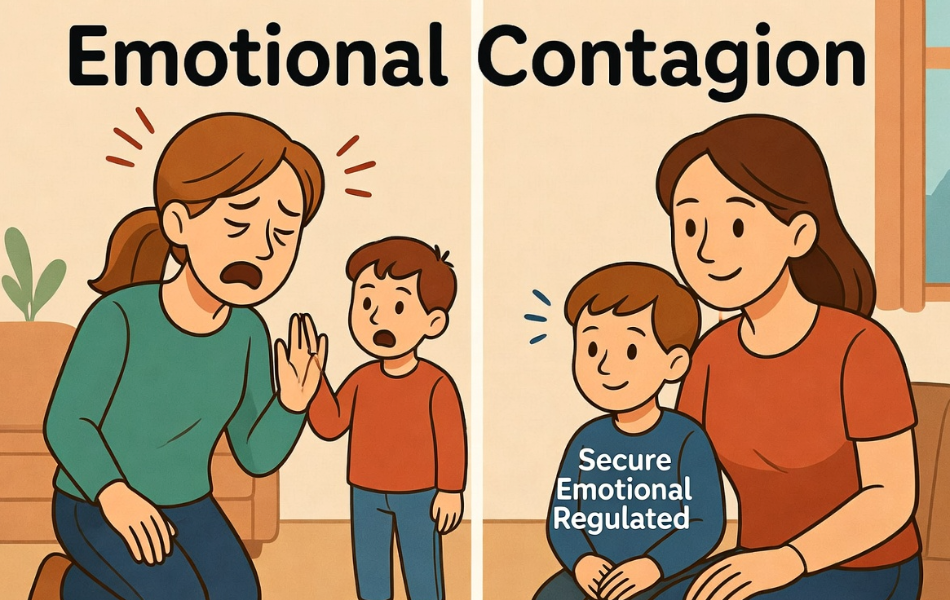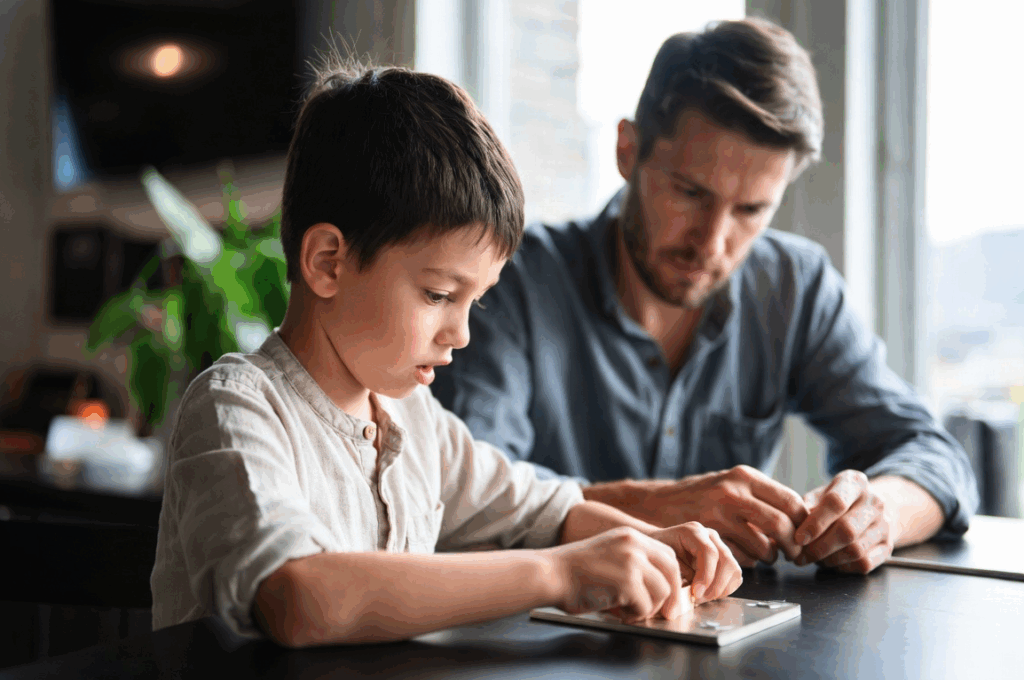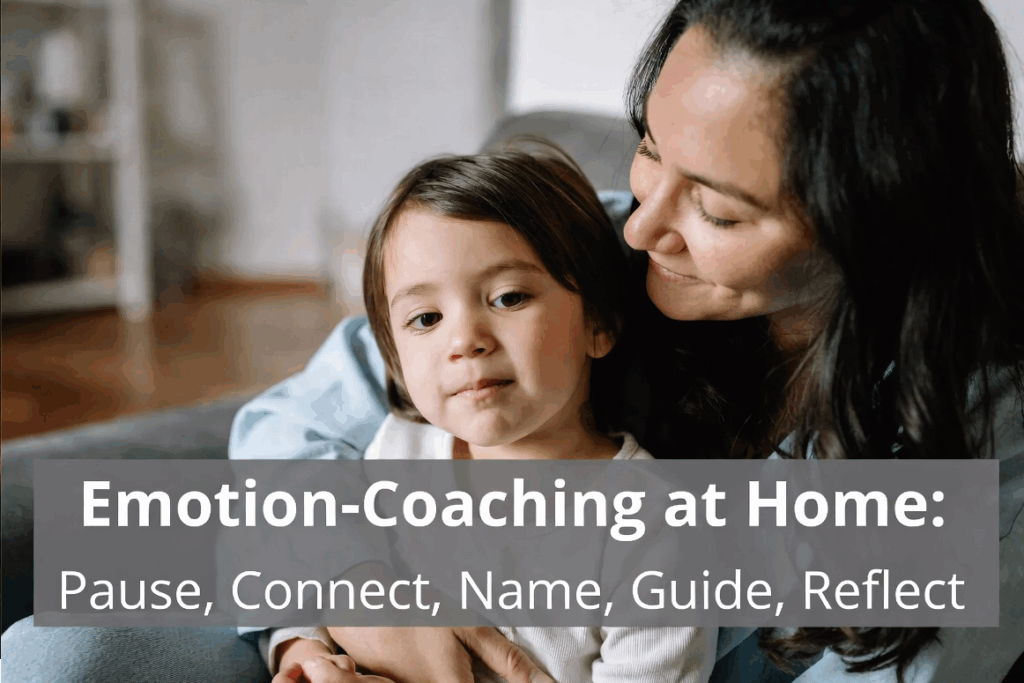Discover how different parenting styles influence your child’s emotional growth and learn practical strategies to help them regulate emotions effectively.
The way you parent today could shape your child’s emotions for life, sometimes in ways you don’t even realize. Every reaction, every rule, every moment of warmth or frustration leaves a lasting mark on their emotional growth. Are your parenting choices helping your child thrive, or holding them back?
Why Emotion Regulation Matters in Childhood
What Is Emotion Regulation?
Emotion regulation is the ability to notice, understand, and manage feelings in a healthy, adaptive way. For children, it’s much more than stopping tantrums or following rules; it’s about learning to navigate the full spectrum of emotions, from excitement to frustration, sadness to anger. Children who develop strong emotional regulation skills are better equipped to handle life’s challenges, form meaningful relationships, and grow into resilient adults.
The Science Behind Emotional Growth
Research in developmental psychology shows that children’s emotional regulation skills are closely linked to the way they are parented. Studies published in Frontiers in Psychology highlight that supportive, structured, and empathetic parenting promotes healthier emotional responses in children. Conversely, inconsistent or harsh parenting can make it harder for children to regulate emotions, leading to heightened stress and difficulty in social relationships.
To understand this in more depth, read my blog on The Brain Mechanisms Involved in Emotional Literacy
Long-Term Benefits of Emotional Skills
Kids who learn to manage their emotions effectively tend to:
- Build stronger, healthier relationships
- Handle stress and disappointment more effectively
- Achieve higher academic success
- Exhibit resilience in the face of setbacks
Helping children regulate their emotions is one of the most important gifts a parent can provide; it sets the foundation for lifelong emotional intelligence.
Parenting Styles and Their Emotional Impact

Parenting styles create the emotional climate in which children grow. While there are four commonly recognized styles, authoritative, authoritarian, permissive, and uninvolved, their impact on a child’s emotional development is profound and unique.
A great read: “Every parent wants the best for their child, but how do your choices shape their future? Dive into a transformative exploration of parenting approaches and their profound influence on your child’s emotional, cognitive, and social growth.”
Authoritative: The Emotion-Coach Parent
Authoritative parents are warm, supportive, and consistent. They provide guidance and set boundaries, but also allow children to express emotions openly. Research shows that children of authoritative parents typically have the strongest emotion regulation skills. Why? Because these parents model healthy emotional responses, provide a secure environment, and offer tools to cope with challenging emotions.
| Example of Authoritative Parenting (The Emotion-Coach Parent) Six-year-old Maya is building a tower of blocks. Just as she adds the final piece, the whole structure collapses. She bursts into tears, shouting, “It’s not fair!” Instead of reacting with frustration or immediately fixing the problem, her mum kneels beside her. |
| Why This Example Shows Authoritative Parenting High warmth + clear guidance Emotions are acknowledged, not dismissed Parent stays calm and models regulation Child is supported in problem-solving rather than the problem being solved for them |
| Emotional Impact on the Child Children raised with this style often: Feel safe expressing emotions Build strong self-regulation skills Become better problem-solvers Develop confidence and resilience |
Authoritarian: The Commander Style
Authoritarian parents are strict, controlling, and often emphasize obedience over emotional expression. Children may follow rules, but their emotions are frequently dismissed or punished, which can make it hard for them to develop self-regulation. Studies suggest that kids raised in authoritarian households may struggle with anxiety, anger management, and social skills because they lack safe opportunities to express and process feelings.
| Example of Authoritarian Parenting (The Commander Style) Eight-year-old Liam accidentally spills his juice on the table while reaching for his breakfast. His father, who values order and discipline, immediately reacts with irritation. Parent: “Liam! How many times have I told you to be careful? This is exactly why I don’t like having drinks at the table. Clean it up now—no excuses. And next time, sit properly.” Liam quickly wipes the mess, shoulders tense, eyes down. He doesn’t say a word. He’s afraid that explaining what happened will sound like “talking back.” Later, when he feels frustrated at school, he holds his feelings in; he’s learned that expressing them only leads to trouble. |
| Why This Example Shows Authoritarian Parenting High control, low emotional warmth Focus on obedience and rule-following Little opportunity for the child to express feelings Mistakes treated as misbehavior rather than learning moments |
| Emotional Impact on the Child Children raised with this style may: Hide emotions rather than express them Become anxious about making mistakes Struggle with self-regulation because emotions weren’t safely acknowledged Follow rules well but lack confidence in handling emotional challenges |
Permissive: The Peacekeeper Approach
Permissive parents are nurturing and loving, but often inconsistent with rules and boundaries. Children may feel free to express themselves, but receive little guidance on managing emotions. This can lead to difficulties in self-discipline and emotional control. For instance, a child might throw a tantrum when frustrated because they have learned that emotional expression without limits is tolerated.
| Example of Permissive Parenting (The Peacekeeper Approach) Four-year-old Noah is at the dinner table, but he refuses to eat what’s in front of him. He starts whining, pushing the plate away, and asking for ice cream instead. Noah’s dad, not wanting to trigger a meltdown after a long day, sighs and says: Parent: “Okay… fine. You can have ice cream, but just this once, alright?” Noah immediately perks up and runs to the freezer. His dad feels a sense of relief; crisis avoided. But inside, he’s frustrated with himself for giving in again. Later in the week, Noah refuses dinner again. This time, he asks for cookies. His dad hesitates, knowing he should set a boundary, but gives in because he doesn’t want another evening battle. |
| Why This Example Shows Permissive Parenting High emotional warmth, low structure Parent avoids conflict to keep peace Child’s wishes override consistent rules Boundaries shift depending on the moment Big emotions from the child feel overwhelming, so they’re appeased |
| Emotional Impact on the Child Children raised with this style may: Struggle with frustration, limits, and self-control Expect emotional discomfort to be avoided rather than managed Have difficulty following rules outside the home Become overwhelmed in situations requiring patience or problem-solving |
Uninvolved: The Ghost Factor
Uninvolved parents provide little warmth, guidance, or attention. Emotional neglect makes it difficult for children to develop regulation skills, leaving them vulnerable to stress, impulsivity, and relational difficulties. In some cases, children learn to suppress their feelings entirely, which can have long-term effects on mental health and emotional resilience.
| Example of Uninvolved Parenting (The Ghost Factor) Ten-year-old Sophie comes home from school feeling upset. She had an argument with her best friend and is holding back tears. When she walks into the living room, her mum is scrolling on her phone, exhausted from work. Sophie hesitates, hoping for comfort. “Mum… something happened at school today.” Without looking up, her mum responds: “Not now, Sophie. I’m really tired. Go do your homework or something.” Sophie quietly goes to her room. She wants to talk, but she’s learned that opening up rarely leads anywhere. She sits on her bed, trying to make sense of her feelings alone. That evening, Sophie acts withdrawn and irritable, but her behaviour goes unnoticed. Her mum assumes she’s “just being moody.” |
| Why This Example Shows Uninvolved Parenting Low warmth + low responsiveness Emotional needs are overlooked, not intentionally, but due to overwhelm or distraction Parent offers neither guidance nor emotional presence Child learns their feelings are theirs to handle alone |
| Emotional Impact on the Child Children raised with this style may: Struggle to understand or trust their own emotions Have difficulty forming close relationships Feel disconnected, anxious, or emotionally unsupported Become independent too quickly, often out of necessity rather than readiness |
The Role of Parental Warmth & Self-Regulation

Modeling Emotional Skills
Children learn emotional regulation less from what parents say and more from what parents model. If a parent consistently demonstrates calm, thoughtful responses to stress, children absorb those behaviors and mimic them. For example, if a parent handles frustration at work without lashing out, children internalize strategies for managing their own emotions.
Emotional Contagion in Families
Emotions are contagious. A dysregulated parent can unintentionally teach children to mirror anxious, angry, or overwhelmed responses. Conversely, parents who regulate their emotions effectively create a secure emotional environment, allowing children to practice regulation safely.
Great read; Foster resilience in your child! Explore the vital role of teaching emotional literacy in understanding and expressing feelings for a brighter future. Teaching Emotional Literacy to Children
Micro-Moments That Shape Emotional Growth

Everyday Situations Where Style Matters
Research shows that children learn emotional regulation in “micro-moments”—small, everyday interactions that occur dozens of times each day. Examples include:
- A spilled drink
- A lost homework assignment
- Sibling conflict over toys
- Anxiety about school presentations
How parents respond in these moments often matters more than rigid parenting labels. Consistent, empathetic responses give children real-time lessons in handling emotions.
A great read: Parenting with Influence: Shifting your parenting style as you and your child grow
Shifting Your Parenting Style in Real Time
Parenting style isn’t fixed. Fatigue, stress, or external pressures can temporarily shift how we interact with children. Awareness of these shifts allows intentional corrections, helping parents stay emotionally supportive even under pressure.
Practical Strategies for Emotion-Coaching at Home

Pause, Connect, Name, Guide, Reflect
One effective framework is the “Emotion-Coach” approach:
- Pause – Take a breath before reacting
- Connect – Offer empathy and presence
- Name – Help the child identify feelings
- Guide – Suggest coping strategies
- Reflect – Discuss what was learned after the moment
This step-by-step method helps children understand and manage emotions while keeping the parent-child relationship strong.
Quick Tools for Bedtime, Tantrums, and Anxiety
- Anchor phrases: “I see you’re frustrated. Let’s calm together.”
- Co-regulation props: stuffed animals, calming jars, or breathing games
- 30-second repair routines: quick hugs, acknowledgment, and reset
Even small practices, repeated consistently, build lifelong skills.
Supporting Your Own Emotional Health as a Parent

Simple Self-Regulation Techniques
- Deep breathing or grounding exercises
- Journaling or verbalizing feelings
- Taking brief pauses during stressful moments
Why Your Recovery Matters to Your Child
Children learn more from how parents recover from mistakes than from perfection. Demonstrating calm, reflective recovery teaches resilience and shows that it’s okay to experience strong emotions and still regain control.
I wrote this blog as I see numerous parents trying to cope themselves. Coping with Your Own Emotions When Your Child Is Struggling
Key Takeaways
Progress Over Perfection
You don’t need to be a perfect parent; just a parent who can pause, connect, and guide.
Small Changes, Big Emotional Impact
Minor adjustments in everyday moments can dramatically improve a child’s emotional growth over time. Each empathetic response, each modeled coping strategy, and each consistent boundary adds up to a strong foundation of emotional resilience.
Closing Thought:
Parenting is a journey of shared emotional growth. By understanding your parenting style and focusing on emotion coaching, you give your child a lifelong gift: the ability to navigate life with emotional confidence, resilience, and intelligence.
| Parenting is a lifelong journey. Explore these related articles to support and strengthen your path as a parent. Emotional Development Milestones in Children Unveiling the Heart: Tracing the Roots of Emotional Literacy Different Emotions |
Recent Posts
Break the Cycle: Heal to Truly Support Your Children. Learn how childhood emotional neglect or abuse shapes parenting, and how to create lasting change. I’m writing this blog from personal...
Parenting through emotional challenges is tough, but by taking care of your own feelings, you’ll become the calm, steady presence your child needs to navigate theirs.

